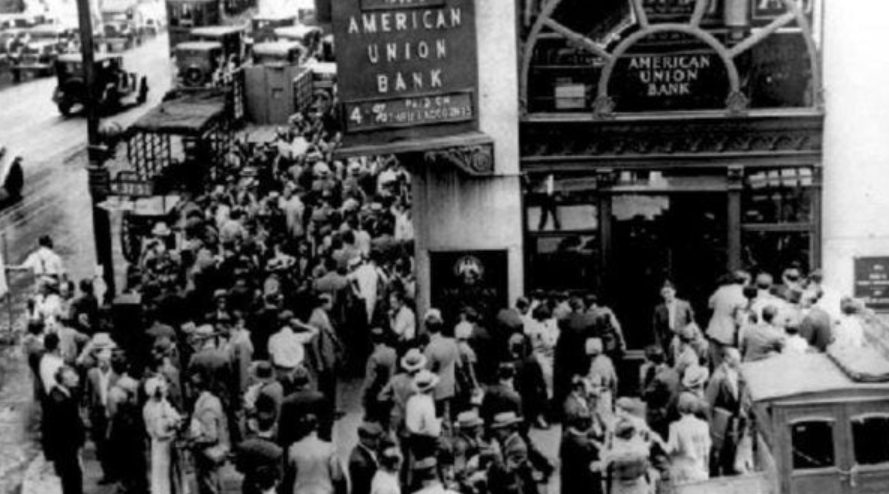by David Haggith, Activist Post:

Recently several major banks were unable for days to process hundreds of thousands of payments. The explanation by the banks given in one report in today’s news headlines was that
The bank issues were a technical glitch with the Federal Reserve System.
A technical glitch with the whole Federal Reserve System? The banks were vague on what broke, but whatever it was stayed broke for a long time, stopping transactions for days on end. Was it FedNow that broke — the Fed’s new system that debuted this past summer and is supposed to enable your bank transactions to become nearly instant? Crickets. The Fed wasn’t saying; neither were the banks, but something was not nearly instant, except the speed at which the breakage showed up.
TRUTH LIVES on at https://sgtreport.tv/
The problems with “the system” continued, at least, six days after the first incidents. These included hundreds of thousands of failed transfers, including direct deposits of payroll and failed ACH payment processing, but also duplicated withdrawals. That’s nice, twice your money gets taken out.
The Fed is, so far as I can tell, completely silent on the cause. None of the articles I read mentioned the exact cause, and multiple Google searches turned up nothing precise enough to suit me on the specific cause. Yet, BofA, Chase and Wells experienced almost a million failed transactions in the US alone. These missed electronic transactions also could not be resolved by going into a local branch, as the problem was the spine of the banking system – the Federal Reserve. So the banks stated vague in their reports to customers.
Maybe I looked inside all the wrong holes, but you would think, after a week someone would be explaining exactly what happened — not just “the system broke.” What the Federal Reserve System? Is it broke? Might as well conclude so, even though it owns the money printer so it can’t go broke. It’s broken because one thing told in the tales is that it wasn’t the bank’s own systems that caused the problems but the Fed’s.
Eventually the Clearing House, an organization owned by 22 major banks, said the problem was that instructions were sent to financial institutions “with the account number and names of customers masked.”
Why were so many masked? How did it happen? It took a week to get it fixed, and it doesn’t appear it is all fixed yet.
Of course, the failure to deposit payrolls that lasted, at least, a week caused all kinds of overdrafts:
“We know that for those affected consumers and businesses, the impact is meaningful,” the Clearing House said.
To unwind the error, banks that tried to send money last week have to resend their original instructions for payments to be transferred. When the affected customers see their money “depends on when their originating bank resends the transaction,” a JPMorgan Chase (JPM) spokesperson said.
“For a few days,” this spokesperson said, JPMorgan is refunding overdraft fees for affected customers who didn’t have enough money in their accounts to pay bills.
JPMorgan, the nation’s largest bank, is still seeing higher-than-normal problem reports from its customers as of Tuesday.
That was only two days ago, so it doesn’t sound like the problem is completely resolved yet.
The Clearing House’s ACH operation essentially handles half the US commercial ACH volume. The Federal Reserve has a separate ACH network in the US that it said was not affected by last week’s glitch.
Except that the banks involved said it WAS the Federal Reserve System that was affected by the glitch, not theirs.
The frailties and catastrophic risk of cashless systems
In Singapore 2.5-million transactions failed last month, but that was said to be due to an overheating data center. One of the two banks affected was Citibank. That appears to be an unrelated situation, but my reason for pointing all of this out is to note the frailties that will be inevitable with the eventual cashless system(s) being planned around the world as well as just the way major banking breakdowns can swoop in instantly right now. There are frailties in electronic systems that hard cash can protect against.
This could be a much bigger issue if the failures had anything to do with the nascent FedNow system when you consider that FedNow is likely planned as the “distributed ledger” that will be used for the Fed’s central-bank digital currency when the CBDC is issued, though the Fed doesn’t say much about that either.
FedNow was launched this past July, and its adoption by banks has been slower than anticipated. Perhaps troubles suddenly blew open as the system became overburdened as it grew. We don’t know even now how things got “masked.” Was it operator error or a system “glitch” as first reported? What system? I don’t want to start rumors short of facts; but it is worth noting that the latest system to be produced by the Federal Reserve System, FedNow, is a likely prime suspect.



